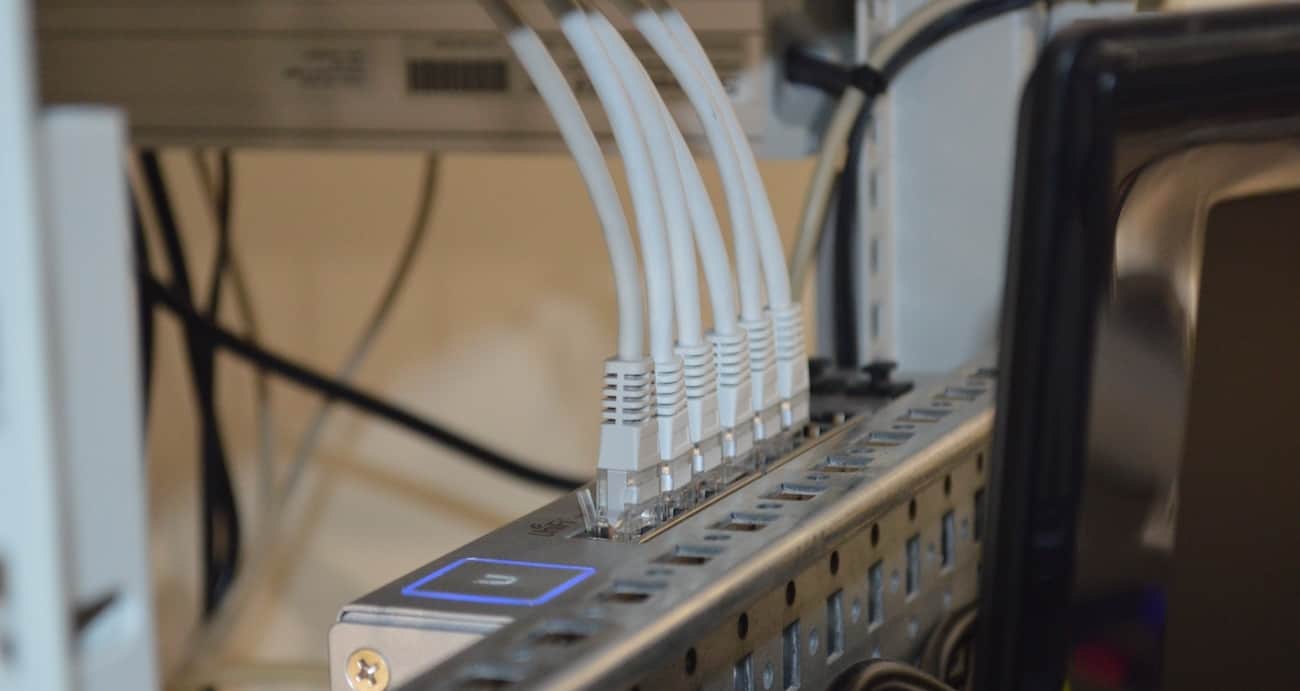What is a Good Internet Speed?
Anything above 25 Mbps is sufficient for 1–3 people to stream HD video on multiple devices, use video chat apps, and connect multiple devices without buffering issues. Connections slower than 15 Mbps are likely to start having buffering issues for video.
When choosing an internet provider, determining which package is best for you often boils down to a question of how much “speed” you want to get out of your service, but what does this really mean? Companies are advertising bigger and bigger numbers each year, but how much is actually practical, and for that matter, what do those numbers even tell you about the quality of the service overall?
In this guide, I’ll explain how to understand your speed options in three parts:
- The basic terms used by internet providers
- How much speed you actually need
- Which type of service is ideal for those speeds
Overview: learn the basic terms

As you explore your options for service, you’ll likely run across these common terms being used when providers describe the various packages they offer:
Bandwidth
Bandwidth in this context simply refers to the amount of data that can be transmitted by your provider in a given period of time. It is important to note that bandwidth is not a speed guarantee; it is merely a reflection of optimal conditions.
Download speed
Sometimes referred to as “downspeed” or simply “down,” this is generally understood as the speed at which your computer can stream and download items from the internet.
Upload speed
Contrary to download speed, upload speed refers to how quickly your computer can send data to the web. We’ll be focused on download speeds in this guide, but this is still an important part of the internet equation, coming into play when uploading photos and videos, playing certain games, and using VoIP services like Skype and Facetime. It may also matter if you're uploading files using P2P file sharing (“torrenting”) services.
Mbps
Megabits per second. Megabits are a unit of measurement for data.
Gigabit
Fiber Internet plans are often described as “gigabit” because the speeds are close to 1,000 Megabits per second (Mbps), which is 1 Gigabit.
Latency
Commonly referred to as “lag,” latency is the delay between when data is sent to your computer and when it ultimately arrives.
Data cap
A limit put in place by a provider dictating how much data you can use per month. Going over this can often mean additional fees and throttled service speeds.
How to Determine How Much Speed You Need

Think about how you’ll use your new internet connection. It can be helpful to think a bit into the future as well, especially if you are signing a contract for an extended period of time. You don’t want to be stuck with a service that doesn’t cut it six months down the road, but you don’t want to be paying more than you need to each month either. Use this guide to help you determine which speed is right for you.
If you just want to check social media and email: 1-5 Mbps
For this, you don’t need anything more than the absolute basics. With Facebook and other news sites becoming increasingly video-centric, however, it may make sense to get something with at least 5 Mbps to ensure you’re able to watch content without running into stuttering or buffering issues.
Recommended service: Satellite or DSL (or whatever is cheapest in your area)
If you like to stream Netflix and other services in HD often: 7-15+ Mbps
Streaming is a bit of a bandwidth hog, and Netflix recommends 5 Mbps worth of download speed per device being used. This means that two people streaming at the same time would need 10 Mbps, three people would need 15, and so on. It’s also important to factor in other devices as well, as they all draw from the same available “stash” of bandwidth you have. This means accounting for every smartphone, smart TV, smart toaster, and smart streaming box you own.
Recommended service: Cable or fiber-optic connection
If you play lots of online games: 10-100+ Mbps
Here’s the thing; you don’t actually need a tremendous amount of bandwidth to play most modern games online with others. That being said, certain games need a solid, constant connection, such as with many popular MMO titles like World of Warcraft. These may require faster upload and download speeds as a result. In addition, it’s important to consider how many games you are downloading from the web. With this becoming the primary means of distribution for software, and game sizes ballooning to 80-100 gigabytes and higher, having a stronger connection means getting into the action sooner.
Recommended Service: Cable or fiber
If you have a house full of power users: 200-1000 Mbps (one gigabit)
If you have multiple users in your household who regularly stream, download large files, play and download games, and stream content in ultra HD resolutions such as 4k, you’re going to need to pull out the big guns to keep everyone satisfied. To decide exactly how much you need, consider the most common activities done on a daily or weekly basis. If this included downloading gigabytes worth of files, it might make sense to get as close to a gigabit connection as possible.
Recommended service: Fiber (or cable if fiber isn’t available)
If you need to download large files from the web frequently: 100-1000 Mbps
Again, the exact amount you need will largely come down to how large the files you are looking to download really are, as well as how much patience you have. For reference, a four-gigabyte file would likely take about five minutes to download under a 100 Mbps connection. With a gigabit service, you’d be looking at about 30 seconds.
Recommended service: Fiber (or cable if fiber isn’t available)
Types of Internet service you can choose from
Today, there are a few primary types of connections used to get online. Not all of them are available everywhere, and some of them come with technical limitations worth knowing about, so let’s take a brief look at each of them below.
Satellite
Satellite internet is broadcast from space directly to your home, making it one of the most universally available options around today. That said, due to the vast distances your data has to travel back and forth through the air, this is also generally regarded as one of the slowest connection types, as well as one prone to interruptions from environmental situations. That said, improvements have been made in recent years on these fronts.
Average Speeds: 1-20 Mbps
DSL
Digital subscriber line (DSL) internet relies on the standard copper telephone lines that run across the majority of the country, and as such, it is another option that is widely available. Again, however, compared to the two options listed below, it has some fairly severe limitations in terms of speed and overall quality of service. If you’re just looking for the bare minimum (a connection to check Facebook and email with, more or less), then this may be all you need.
Average Speeds: 1-15 Mbps
Cable
Cable is the option you may be most familiar with, as it is one of the most common internet connections found in many areas across the US. Offering a good balance of speed and price, cable providers such as AT&T and Charter can provide enough upload and download bandwidth to handle most tasks, including streaming HD content from services like Netflix and Hulu. They frequently come paired with bundle options for TV and phone service as well.
Average Speeds: 10-300 Mbps
Fiber
Fiber optic connections make up the backbone of the internet worldwide, as they provide the fastest speeds currently possible for transmitting data over long distances. If fiber connections are available in your area, you should know that they commonly offer more than enough to handle just about everything you could throw at them. This comes at a higher price, however, so remember that you may not need all that raw power in the first place.
Average Speeds: 50-1000 Mbps (1 Gbps)
Remember: raw speeds don’t necessarily ensure a great connection
As mentioned earlier on, stated bandwidth is not the same as your actual, demonstrable speeds on a given day. All of the various service types are prone to their own degree of intermittent issues, especially during times of peak connectivity such as early in the evening. Generally speaking, you can expect to experience speeds slightly lower-than-advertised sporadically, and this is an important consideration to make when determining how much you actually need to pay for.
Another factor to consider is wired vs wireless connections. As a rule of thumb, a hardwired ethernet connection (running, say, directly into an Xbox or streaming device) will always deliver more consistent, quicker speeds than using Wi-Fi. Obstacles such as walls, furniture, and distance from the router can all degrade a wireless signal, so be sure to keep this in mind when planning out how your connection will be set up in your home.
Speed Range Summary for Home Wi-Fi Internet Users
| USAGE LEVEL | APPLICATIONS | DOWNLOAD SPEED | UPLOAD SPEED | LATENCY |
|---|---|---|---|---|
| Basic access | Email, Facebook, general browsing | 1-5 Mbps | 0.5-2 Mbps | 200 ms+ |
| Basic streaming | SD video streaming, basic gaming, basic video conferencing | 5-10 Mbps | 2-4 Mbps | 150-200 ms |
| Heavy streaming | HD video streaming, gaming | 10-30 Mbps | 4-10 Mbps | 100-150 ms |
| Premium connection | 4k streaming, gaming, and video communication | 30-80 Mbps | 10-20 Mbps | 80-100 ms |
| Platinum connection | Multiple intensive users, home office, professional gaming | 80-1,000 Mbps | 20-1,000 Mbps | 0-60 ms |